All about titanopsis

Lovers of home plants often want to purchase an unusual and unpretentious specimen, so their choice stops at succulents. They do not require frequent watering and complex maintenance, but there are some peculiarities of their maintenance. Titanopsis, due to their exotic appearance, are popular among flower growers.

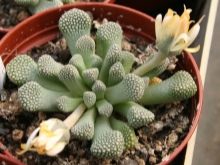
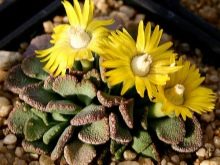
Description
Succulents of the genus Titanopsis are perennial plants that naturally grow in the harsh deserts of Africa. They have 6 to 10 thick and fleshy leaves, similar to minerals, with warty growths along the edge. Hence their name - "like limestone". They bloom from late summer to mid-autumn. Single flowers up to 2 centimeters in size look like orange or yellow chamomile.
Titanopsis are slow-growing succulents. They are undemanding to care and tenacious enough.
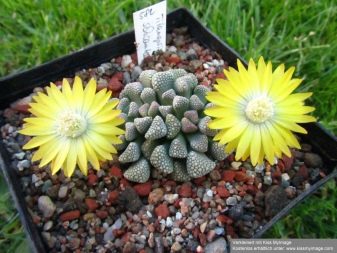
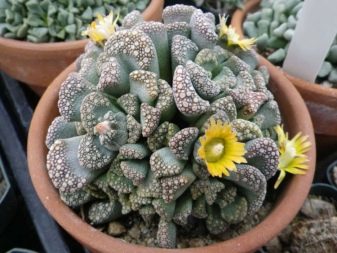
Views
The genus Titanopsis includes the following plant species:
- titanopsis calcarea (calcarea or calcareous titanopsis);
- crassula ausensis (crassula ausensis);
- hugo-schlechteri (hugo schlechter);
- titanopsis primosii (primosi).
Titanopsis calcareous
The leaves of the rosette succulent are grayish-green to ocher. They have a spatulate shape and are covered with hard, white, reddish tubercles at the edges of various sizes. Form a rosette with a diameter of 6-8 cm.
The plant blooms in September or October. The color of the flowers is from beige-pink to orange-yellow.
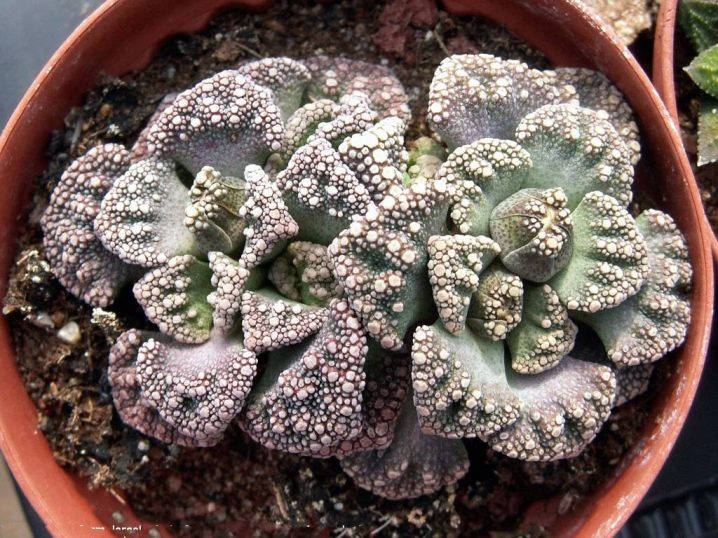
Crassula Ausensis
This species has clavate leaves with a silvery-green color and up to 3 cm in length. It blooms with white flowers, collected in small inflorescences on a peduncle up to 10 cm high.
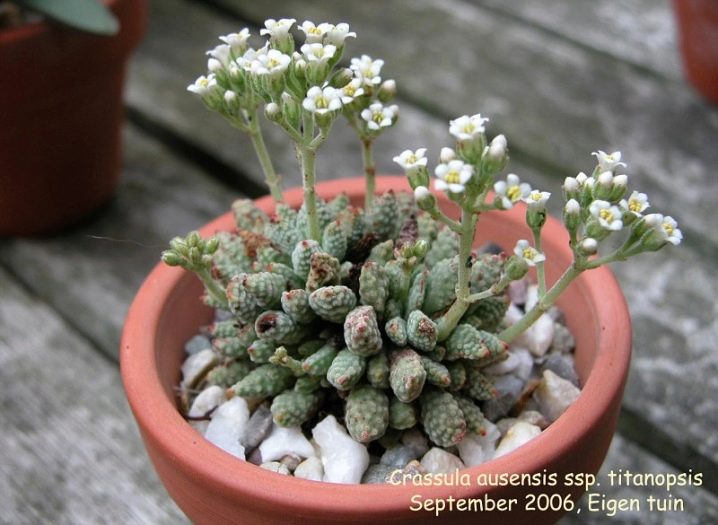
Hugo schlechter
Titanopsis hugo schlechter has triangular, short, slightly shiny orange or ocher leaves. Forms rosettes and tends to grow in winter. Yellow or orange flowers bloom in winter and spring.
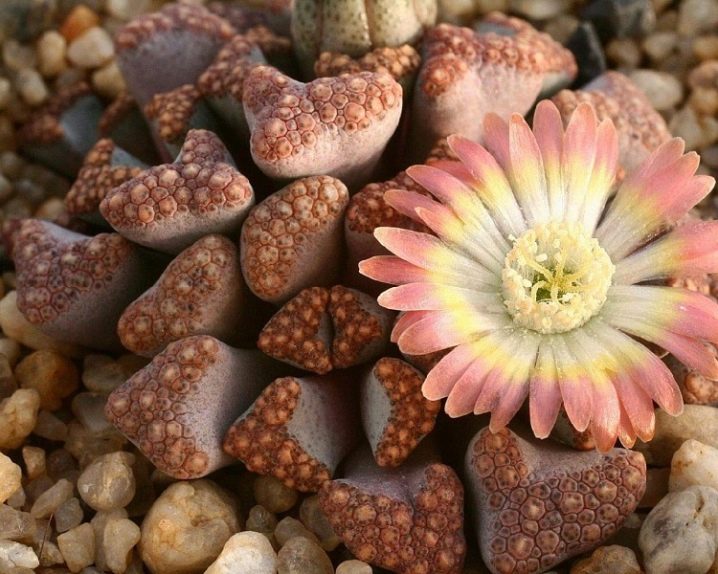
It looks like a calcareous titanopsis, however, unlike it, it has smaller grayish-white leaves with rounded tips and has tubercles of approximately the same size.
This species blooms in the spring. Flowers are yellow-beige.
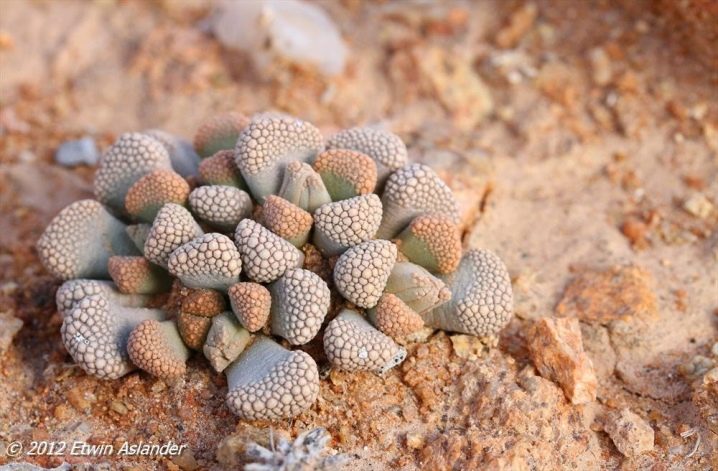
Planting and leaving
Proper care will help preserve the original beauty of titanopsis. These plants are unpretentious and easy to keep at home.
- Choosing a flower pot. For titanopsis, you should choose a wide container, since the plant grows in width. Its roots are large enough and have a pivotal structure, so the pot must be deep. In addition, it must have drainage holes that will help drain excess water. You also need to put drainage in the pot.
- Priming. Light, loose soil will do. A mixture of leafy earth and sand is required. Shells, granite, brick or pumice chips are suitable as a drainage component. It is possible to use a ready-made substrate created specifically for succulents. After planting the plant, the soil surface can be covered with fine gravel. Regular fertilization is not required for titanopsis. Sometimes it can be fertilized with a dilute succulent solution.
- Lighting. In the winter season, titanopsis needs diffused lighting. In the spring, it is necessary to gradually accustom the plant to the sun, shading it from direct rays in order to avoid the appearance of burns. In summer, a succulent needs bright sunlight for full growth.
- Humidity and air temperature. During the growth period, titanopsis tolerates different temperatures (up to + 40 ° C).The optimal temperature regime in summer is 18-27 ° C during the day and 10-16 ° C at night. In winter, the plant needs low temperatures, around 10 ° C. Titanopsis prefers dry air and does not need to be sprayed.
- Watering. In spring and summer, the soil should be moistened as it dries completely. During wintering, watering is reduced to a minimum or completely eliminated. Excessive soil moisture can lead to rot and death of the plant. During flowering, the plant needs a little more regular watering.
- Transfer. Sensitive roots do not tolerate transplanting well. Titanopsis must be carefully moved to a new pot while maintaining the soil ball. The transplant is carried out at the end of summer with a frequency of once every 2-3 years. Dry roots are removed. After changing the pot, the plant should not be watered for 3 weeks with sufficient lighting. Bushes do not have long shoots and do not need pruning. Only damaged or dead leaves are cut.
- Rest period. The health of titanopsis depends on proper rest of the plant during this period. A succulent needs diffused light and dry air. Watering should be limited as much as possible. Top dressing during the dormant period is not carried out.
- Bloom. During the formation and appearance of flowers, titanopsis needs a lot of light and a little more frequent watering. Fertilizers can be used during flowering.
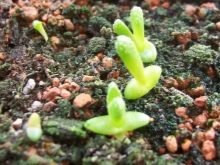
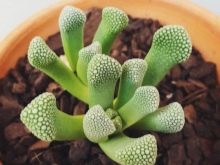

Reproduction
Titanopsis reproduces by dividing the bushes into individual plants. The separation rules are the same as for a conventional transfer.
Seeds are sown in a slightly moist disinfected soil. Seeds are not soaked as they may be damaged during germination prior to planting. They should be sown in rows at a distance of 1.5 cm, slightly deepening into the ground and not sprinkling on top. The surface is sprayed with water and covered with a film. The seed pot should be kept at a high temperature and in good diffused lighting, periodically ventilated. The first shoots appear in 2-3 days, the subsequent ones - up to 1-2 weeks.
After germination, the film is removed. Planting is carried out after the appearance of the third pair of leaves.
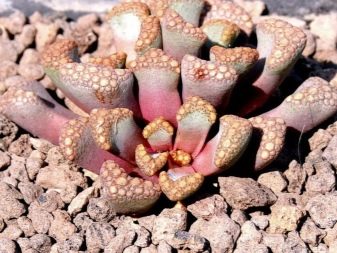
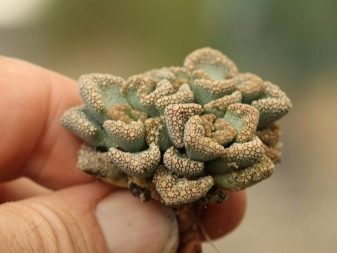
Diseases and pests
Titanopsis is practically not affected by pests. Spider mite infestation is sometimes found. Over-watering can cause plant roots to rot. In low light, succulents bloom poorly and lose their regular shape.
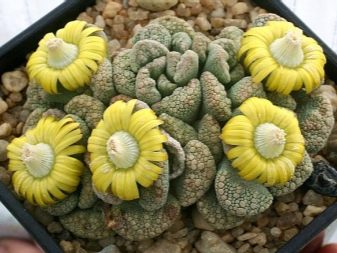














The comment was sent successfully.